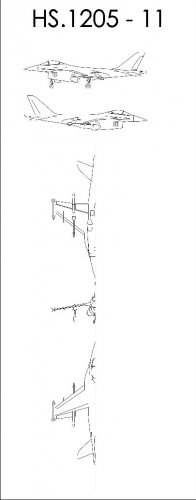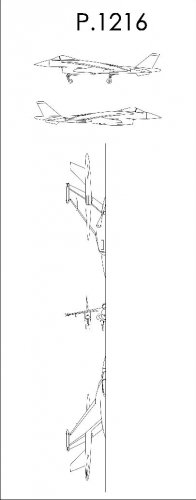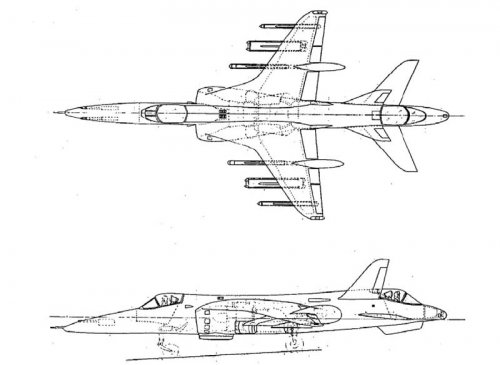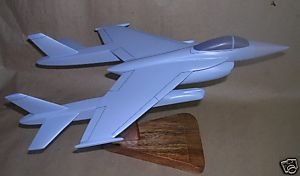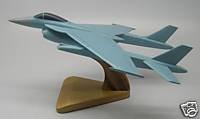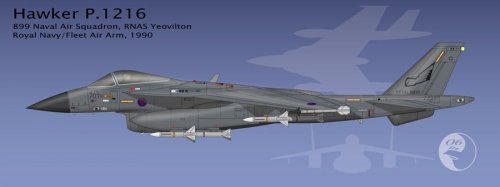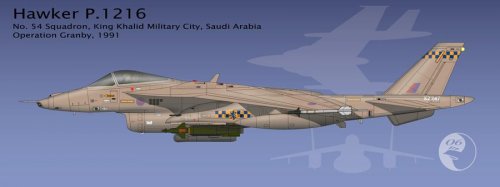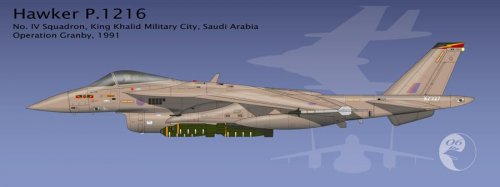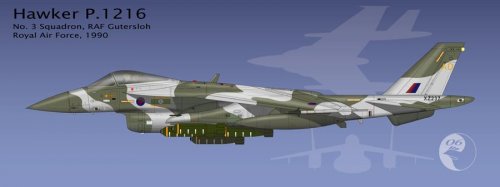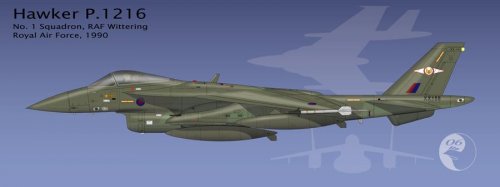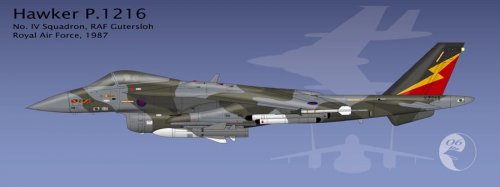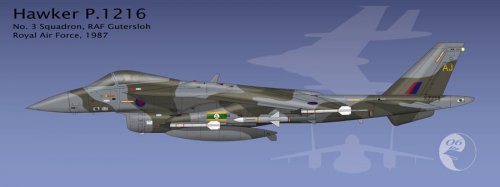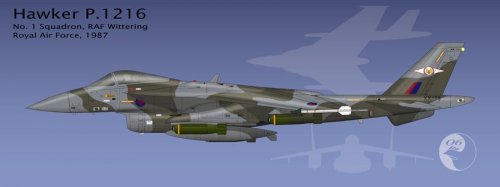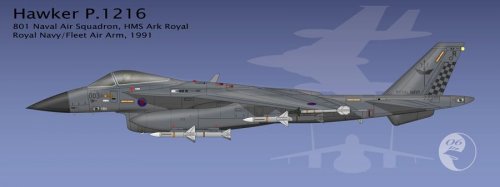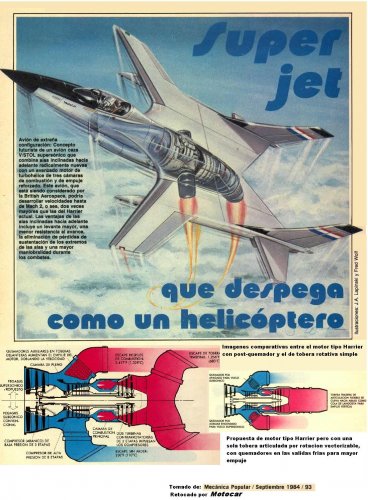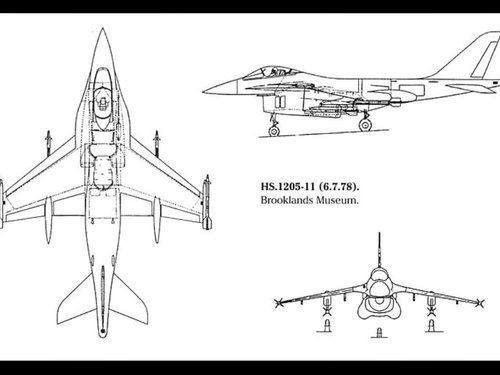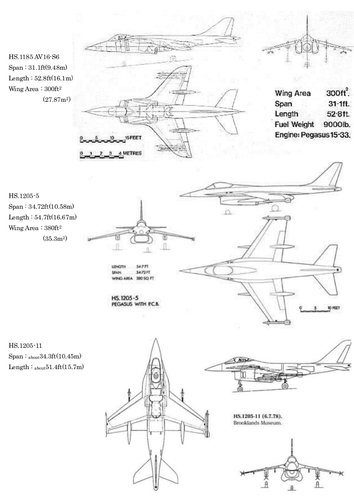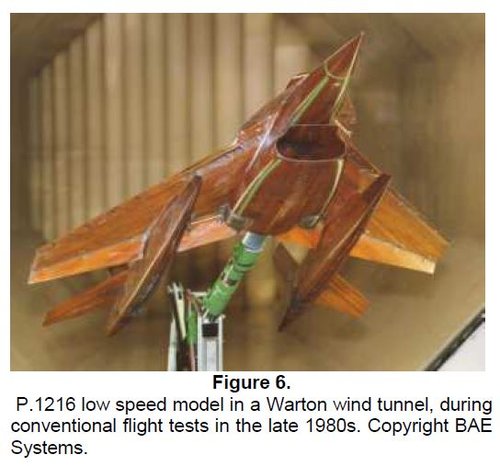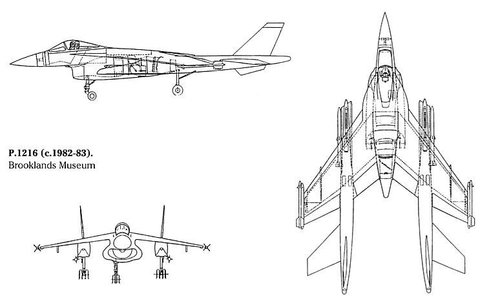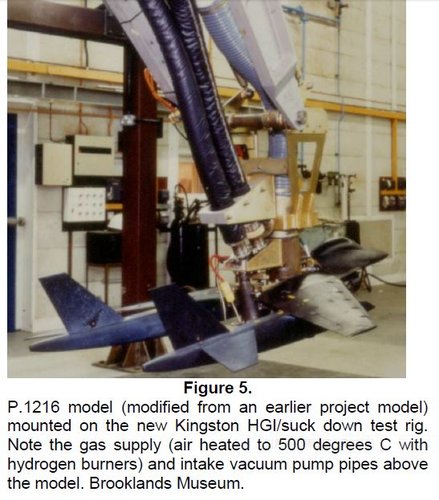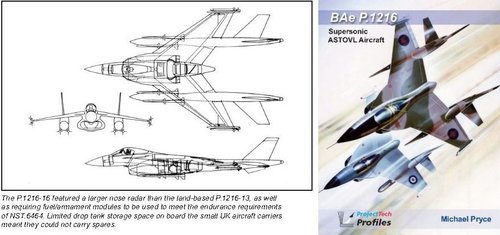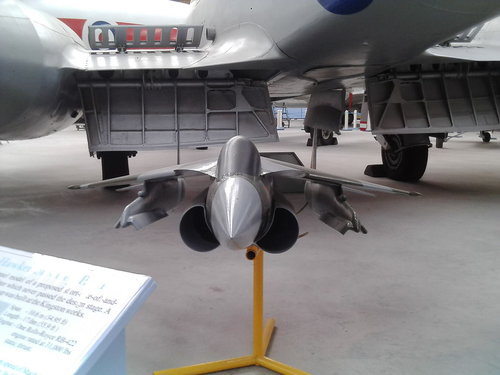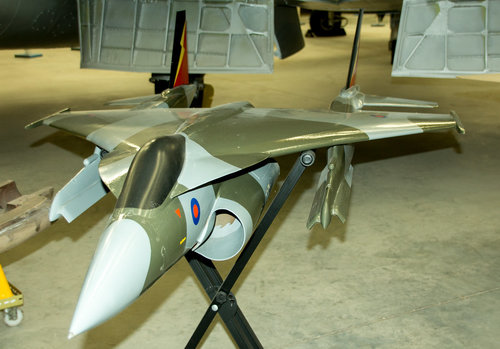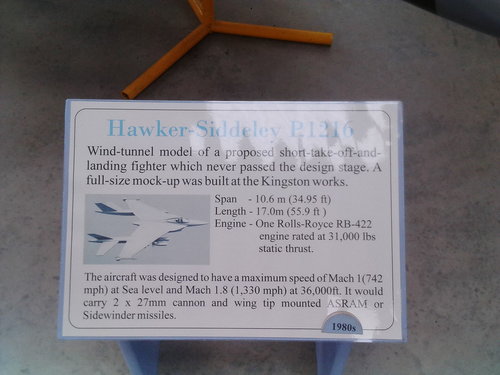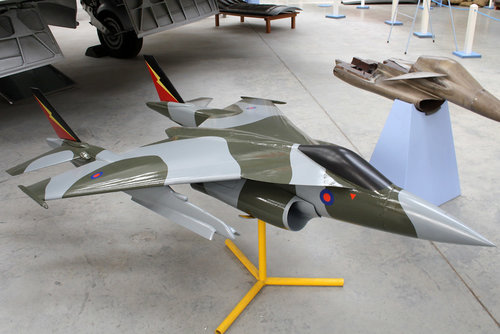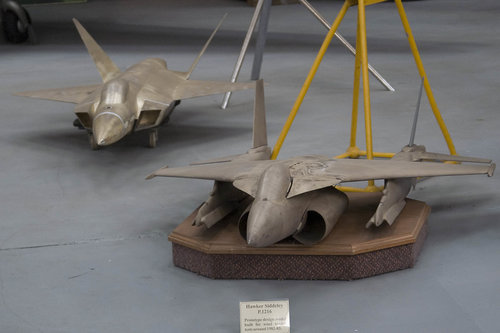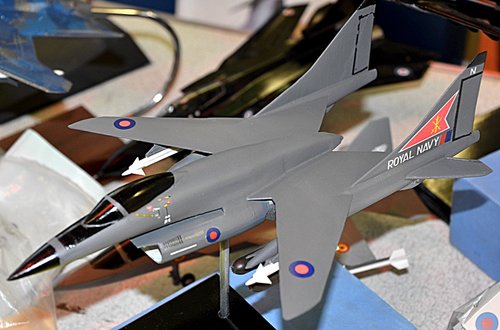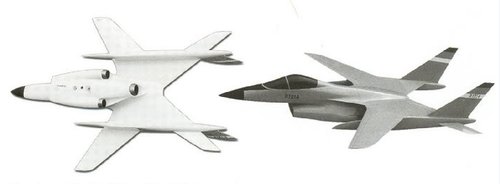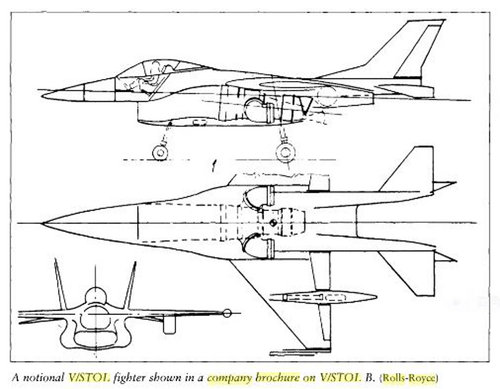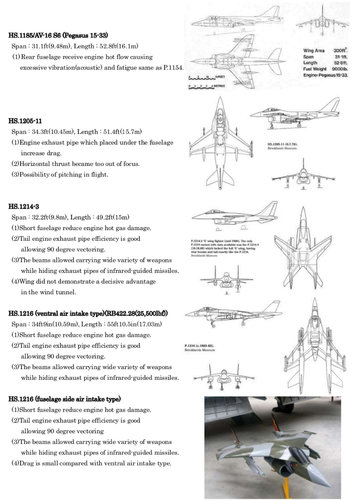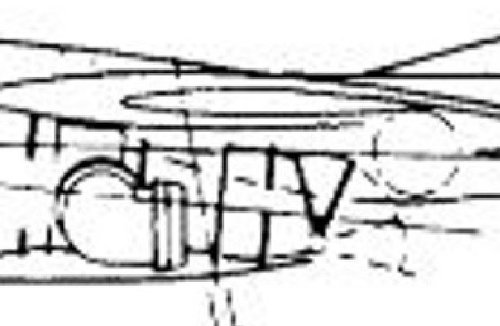After the Harrier was commissioned and its successive versions developed, Hawker, Hawker Siddeley and finally BAe continued to work on numerous VTOL fighter projects.
The staffs regularly demanded a supersonic successor to the Harrier and Hawker, with its experience on the P.1150 and P.1154, was naturally in the best position to finally release a supersonic VTOL. Almost all of these projects used the vector-pushed turbojet formula associated with the PCB technique to provide the power needed for a supersonic VTOL.
Hawker logically resumed developments from P.1154 by beginning the Studies on HS.1185. It should be noted that none of these projects led to an operational device or even a prototype and that to date no supersonic VTOL has yet been put into service despite the appearance in the early 1990s of the Yak-41 M (the first devr Lockheed F-35B if this program is completed for the vertical take-off version).
The Hawker Siddeley HS.1185 was a VTOL supersonic fighter project, also known as AV-16-S6, which began its studies in 1974.
The aircraft was drifting from the AV-16, a subsonic successor to the Harrier studied in cooperation with McDonnell Douglas in 1973 and abandoned in 1976. The AV-16-S6 was to be powered by a Pegasus 15-13 equipped with PCB pipes, to be armed with two 20 mm guns and four IR Sidewinder missiles under wing pylons. The aircraft had a wingspan of 9.4 metres and a length of 16.2 metres and was
essentially an improved version of the P.1154 for the US Navy and the Royal Navy.
The Hawker Siddeley
HS.1205 was also a VTOL supersonic fighter project powered by a Pegasus II with four steerable pipes equipped with "Plenum Chamber Burning" type, LERX (Leading-Edge Root Extensions) and an entrance air under the nose.
The LERX wing extensions were designed by McDonnell Douglas for the Harrier II and create vortexes on the wings to increase the aircraft's manoeuvrability.
Studies on HS.1205 began in the summer of 1976 and lasted until 1979.
The HS.1205 was an aircraft designed to be highly manoeuvrable in air combat and the development team believed that the directed thrust was the best configuration for this class of aircraft, a philosophy shared by the RAF.
With the PCB system, the fuel no longer burns in the post-combustion channel but in an enclosure (Plenum Chamber), the thrust is more important and the thermodynamic efficiency very favorable. Bench tests conducted by Rolls-Royce showed an
increase in the cold flow thrust of almost 100%, with the total thrust of the reactor increased by about 50%.
In the case of Pegasus, which provides 9980 kgp, the thrust in the front pipes increases from 5000 to 7500 kgp. PCB behavior and ignition tests were conducted at simulated supersonic altitudes and velocitywithout major difficulties.
With the PCB on, the specific fuel consumption rises to about 2.5 times that of a normal Pegasus, but in flight only two-thirds of that of a conventional post-combustion device.
The development of pcB pipes continued throughout the 1970s and in 1984 a complete Harrier fuselage (built in Kingston from elements of the Harrier GR Mk.1 XV798 and T Mk.2 XW264 damaged in landing accidents) and equipped with PCB pipes was tested on a test bench at Shoeburyness.
The oldest HS.1205 configurations were synthesized with the
HS.1205-5, which had four Sidewinder infrared missiles mounted under the wings. The engine was placed under the fuselage to retain maximum space for the structural fuel tanks and PCB devices were installed on the front steerable pipes. Tests were carried out in the wind tunnel to determine the best way to prevent the re-ingestion of hot gases through air intake.
The
HS.1205-11 had a configuration similar to that of the HS.1205 with a single cannon mounted in the right root of the wing. The later HS.1205-15 used more traditional lateral air intakes as on the Harrier.
The configuration of the HS.1205 posed technical problems that were difficult to solve. If the four pipes were placed high enough on the fuselage, the tails would receive the hot flow of the reactor causing excessive vibration and damage. If the four pipes were placed under the fuselage the drag increased and the horizontal thrust became too out of focus. There was also the possibility of pitching in conventional flight. These factors led to the abandonment of the HS.1205 concept, essentially a derivative of P.1154, and to the study of the P.1212/P.1214/P.1216 series.


